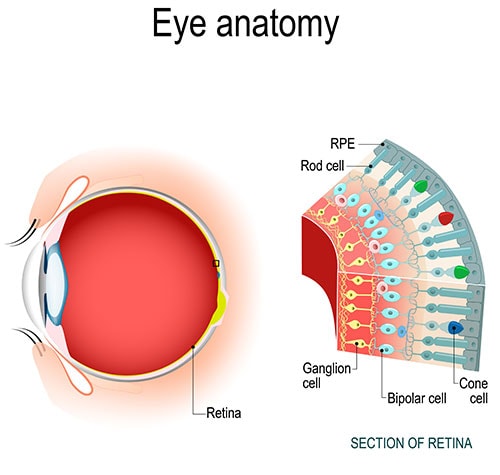All Categories
Featured
When it concerns sun safety and security, the majority of people concentrate on shielding their skin from unsafe UV rays. The results of UV radiation on your eyes are similarly vital yet commonly forgotten. Long term exposure to ultraviolet (UV) rays can cause numerous eye problems, a few of which may lead to irreversible damage or vision loss. Whether you're outdoors on a warm coastline or taking a walk on an overcast day, comprehending exactly how UV rays impact your eyes and finding out just how to secure them is critical for keeping healthy vision.
What Are UV Rays and Just How Do They Effect the Eyes? UV rays are a type of invisible radiation released by the sun. There are 3 types of UV rays:
UVA Rays: These permeate deeply right into the skin and eyes, contributing to long-term damages. UVB Rays: These are more extreme and can create surface-level harm, such as sunburn or corneal damage. UVC Rays: These are one of the most hazardous however are taken in by the Planet's environment and rarely present a straight danger. Both UVA and UVB rays can harm various components of the eye, consisting of the cornea, lens, and retina.
Short-Term Impacts of UV Exposure. Even a short duration of extreme UV exposure can hurt your eyes. A common problem resulting from this is photokeratitis, usually defined as "sunburn of the eye." Symptoms consist of:
Agonizing or red eyes. Sensitivity to light. Extreme tearing. Temporary fuzzy vision. Photokeratitis is typically short-term however acts as a tip of the instant risks of UV radiation.
Long-Term Results of UV Direct Exposure. Cumulative UV exposure gradually can lead to a number of extreme eye problems, including:

Cataracts: UV rays increase the development of cataracts, a condition where the lens of the eye ends up being cloudy, leading to vision problems. Cataracts are a leading reason for blindness worldwide.
Macular Deterioration: The macula, a part of the retina accountable for main vision, can be damaged by prolonged UV exposure, raising the risk of age-related macular deterioration (AMD)
Pterygium: Frequently called "surfer's eye," this condition includes a development of cells on the white part of the eye, which can expand over the cornea and harm vision.
Pinguecula: UV exposure can create yellow-colored places to base on the conjunctiva, bring about irritation and pain.
Skin Cancer Around the Eyes: The delicate skin bordering the eyes is extremely vulnerable to UV radiation, increasing the threat of basal and squamous cell cancer.
Safeguarding Your Eyes from UV Damages. Fortunately is that safeguarding your eyes from UV radiation is easy and effective. Here are some necessary suggestions:
Put On UV-Blocking Sunglasses. Choose sunglasses that obstruct 100% of UVA and UVB rays. Look for labels indicating "UV 400" security. Wrap-around designs supply extra coverage, stopping UV rays from going into from the sides.
Utilize a Wide-Brimmed Hat. A hat with a wide brim can block virtually 50% of UV rays, supplying additional protection for your eyes and the fragile skin around them.
Stay Clear Of Optimal Sun Hours. UV rays are strongest in between 10 a.m. and 4 p.m. Lessen your exterior exposure throughout these hours, or ensure you're effectively safeguarded if you need to be outside.
Protect Your Eyes Year-Round. UV rays exist year-round, also on gloomy or snowy days. Snow, sand, and water can show UV rays, magnifying their results. Make sunglasses a part of your day-to-day routine, no matter the season.
Consider UV-Blocking Contact Lenses. Many call lenses currently provide UV defense, which can be an additional guard when coupled with sunglasses.
Urge Eye Protection for Kids. Kid's eyes are a lot more susceptible to UV damages because their lenses are clearer, enabling more UV light to reach the retina. Guarantee they put on sunglasses and hats when playing outdoors.
Schedule Normal Eye Tests. Regular brows through to an eye treatment specialist are necessary for checking your eye health and wellness. An eye doctor can discover early indicators of UV-related damage and suggest solutions, such as prescription sunglasses or UV-blocking glasses tailored to your needs.
Final thought. UV rays might be invisible, yet their effect on your eye health is extremely genuine. From temporary pain to long-term problems like cataracts and macular degeneration, the threats of UV exposure are too significant to overlook. By wearing UV-blocking sunglasses, limiting your exposure during optimal hours, and scheduling routine eye examinations, you can shield your vision and take pleasure in the outdoors safely. Remember, your eyes are just one of your most valuable assets-- take the essential actions to secure them from damaging UV rays today.
Latest Posts
Reasons Consistent Vehicle Maintenance at Montclare Auto Repair Reduces Costs
Secure Your Financial Investment with Expert Rain Gutter Installation
Discover Cut Costs on Car Maintenance with Montclare Auto Repair’s Special Deals
More
Latest Posts
Reasons Consistent Vehicle Maintenance at Montclare Auto Repair Reduces Costs
Secure Your Financial Investment with Expert Rain Gutter Installation
Discover Cut Costs on Car Maintenance with Montclare Auto Repair’s Special Deals